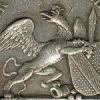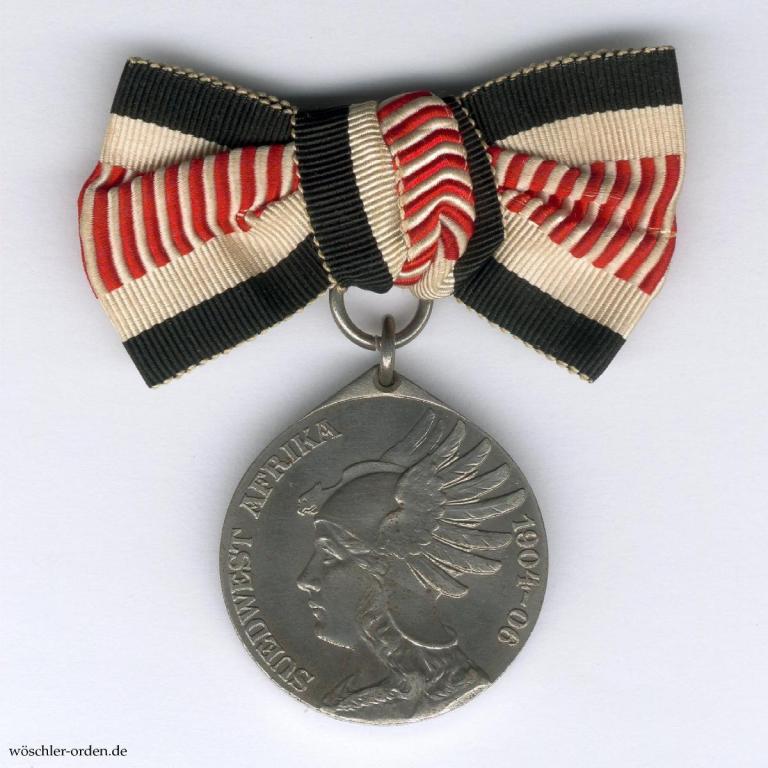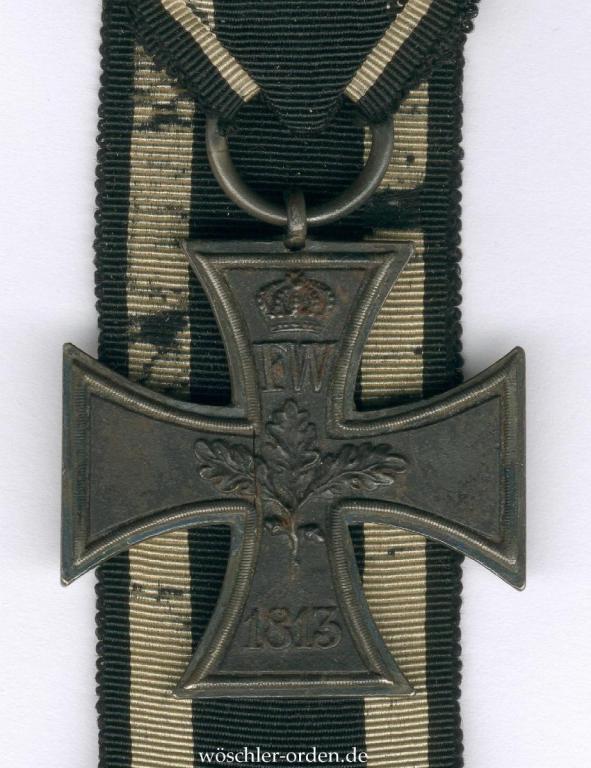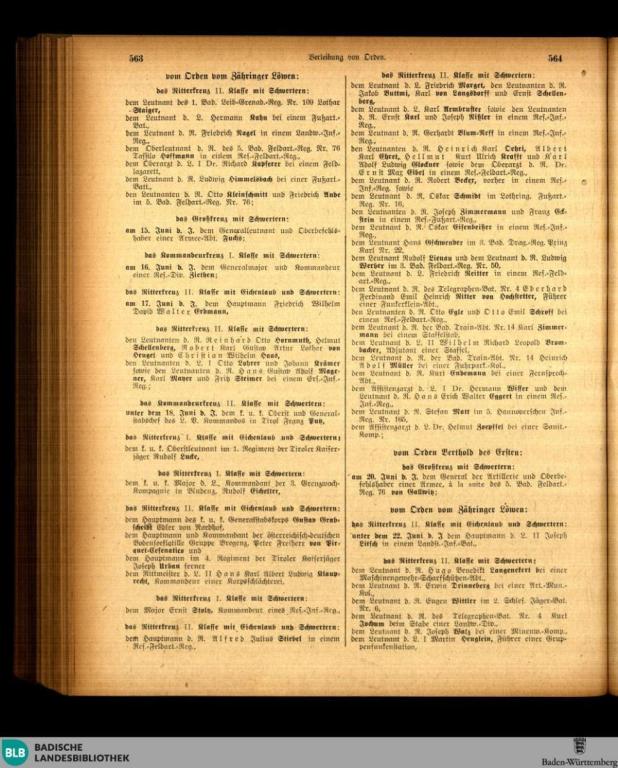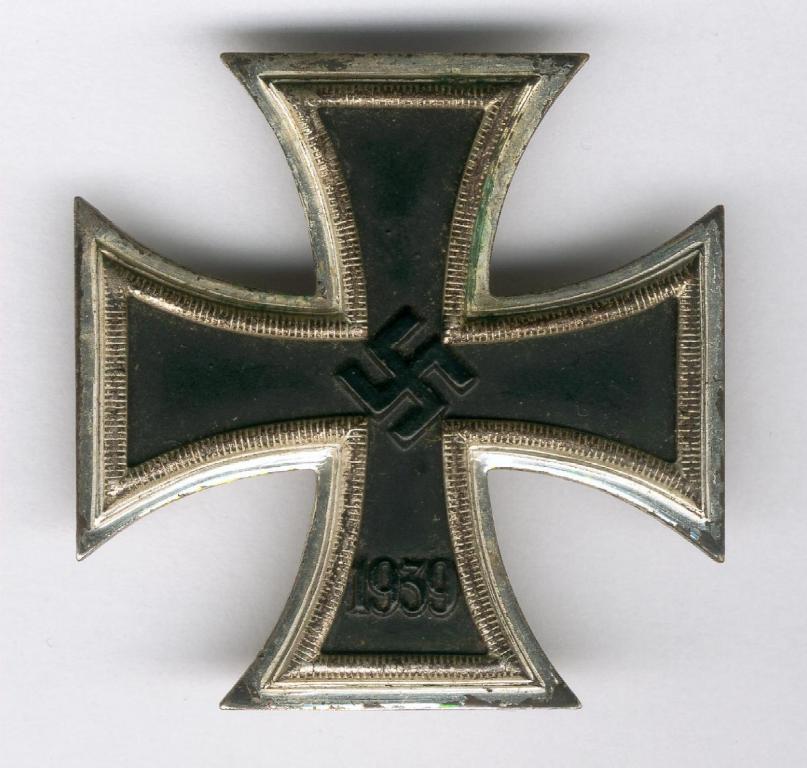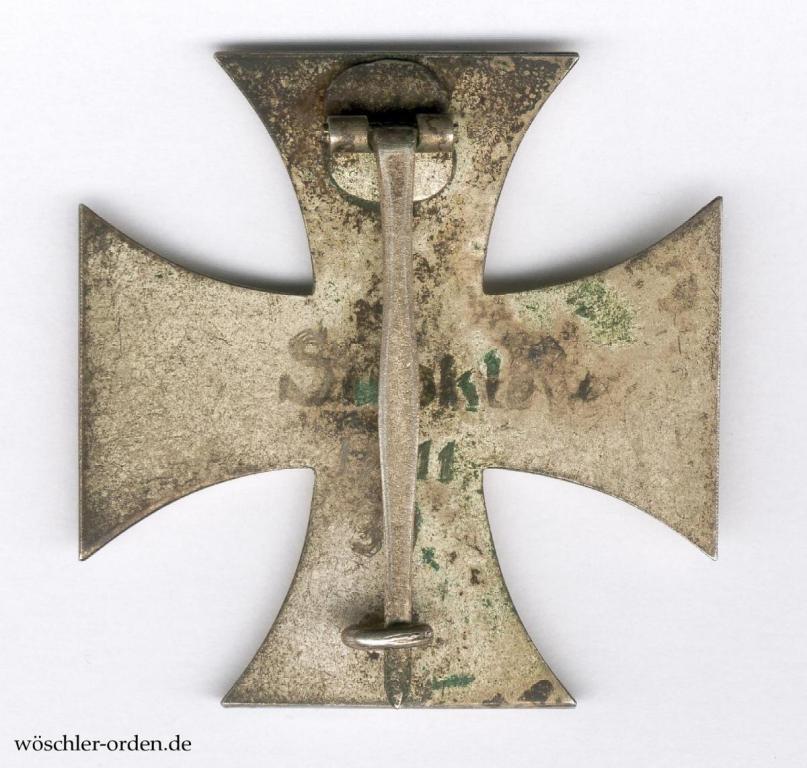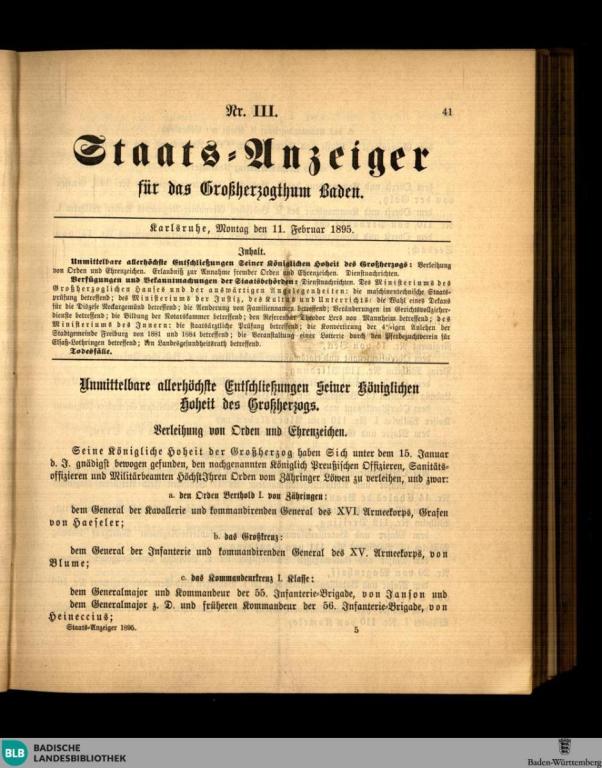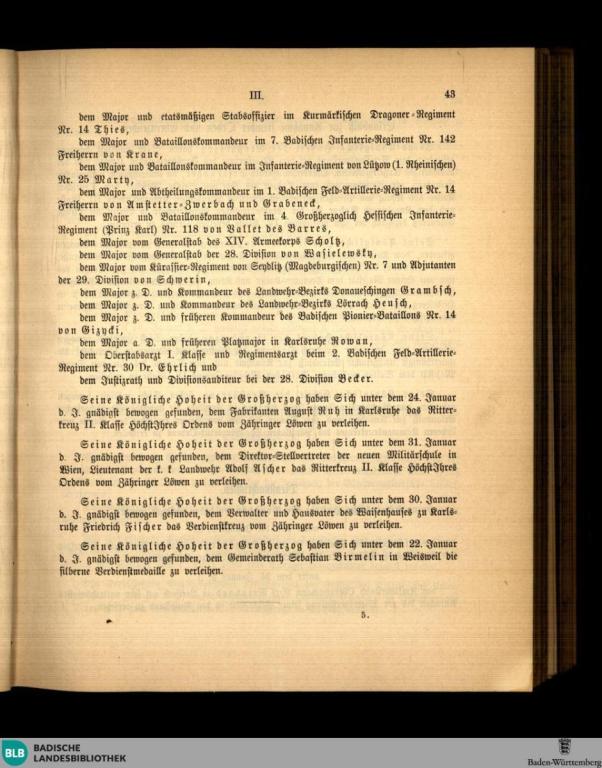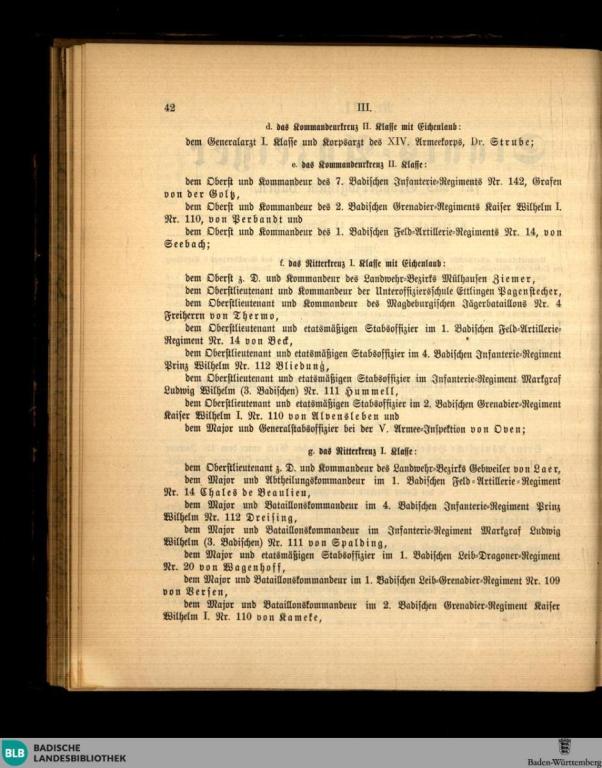-
Posts
3,086 -
Joined
-
Days Won
13
Content Type
Profiles
Forums
Blogs
Gallery
Events
Store
Everything posted by saschaw
-
I'm sorry to say so, but this piece looks rather suspicious to me! The signature should, to my knowledge, read "O. SCHULTZ" and is way less apparent, sometimes close to invisible. Here's a steel example I handled a while ago... despite the obverse being the same for bronze and steel medals, these two medals cannot originate from the same die...
-
I agree with Dansson, probably a cross by the unknown(?) maker that used the trademark Victoria. Besides the replaced(!) thin needle, I don't see anything in common, sorry...
-
Here's a prime example of what an authentic 1813 cross roughly should look like. Of course, there are variations as well, but the general design of the cast iron core won't differ too much...
-
I was surprised he wouldn't have received a decoration from Baden during the "Great War", so I checked there. And indeed, he was awarded something: the Großkreuz mit Schwertern of the Orden Berthold des Ersten, on June 20, 1917. That's a very high and very uncommon honor, Volle (p. 219) gives a total of 25 awarded.
-
I almost agree with Scott: his two-place bar, certainly to a career EM or NCO, could, from the precedence, well be to a Prussian! A Baden native within a Baden unit of the XIV. Armee-Korps would rather wear the Baden merit medal in front of the Centenary medal than vice versa. Also, this medal bar probably would have been worn with an additional pre-1913 long service award below it - Prussian or Baden type depending on the man's unit. Besides the mentioned fact no one could apply for two crosses even if they technically qualified twice, brothers were not eligible for the next of kin crosses! Those were meant for parents and widows only, as is reflected by their official full name Ehrenkreuz für die Witwen und Eltern gefallener, an den Folgen von Verwundung oder in Gefangenschaft verstorbener oder verschollener Kriegsteilnehmer. Never awarded to orphans either, by the way!
-
Not sure how your driving capability could affect the authenticity of this Bavarian cross... Authentic pieces are not determined by the extent of the opening, but by the proper maker, proper die condition, proper maker's marks, and - in this mounted group - by a combination that fits the few known awardees. A shame it didn't come with any documentation or even a hint to its former owner! By the way, this very bar will be featured in the decades-long awaited and soon-to-be published work by Sascha Zimmermann. It's odd everyone has different numbers! Bernd Döbel created his statistics from the original rolls in the Munich archive. Just another reason I really can't wait for SZ's books any longer...
-
The 1877 Ordens-Liste has two Wendts with an EK2w, a Feld-Magazin-Rendant b. d. General-Etappen-Inspektion d. 3. Armee Julius Eduard Hermann Wendt, and a Feld-Proviantmeister beim 6. Armee-Korps Karl Friedrich Hermann Wendt (both: p. 1246). No idea which of these two is "mine"... and if it is his group.
-
I love happy endings! A group we feared might have been lost forever, reappears more than a decade later - just like a phoenix! It took me a while to notice the Bavarian St. Michael is mounted with an improper ribbon. I'm not sure, but wouldn't the LD2 rather be the Prussian type, as Dr. Wehner was an officer? Hessen-Darmstadt's (as Baden's!) Reserve- and Landwehr-Dienstauszeichnung was for EM and NCOs only. So, another improper ribbon, I'd assume - nothing unheard of, especially with those petty states' long service awards! By the way, I took the liberty to merge Christophe's first thread from 2005 with his second 2009 attempt and also added the mystery solution to the thread title...
-
How about Hauptmann Wendt from Landwehrbezirk I Breslau? In the 1900 Royal Prussian army rank list, he's listed with RAO4, KO3, KO4w, EK2w and LD1. An RKM3 is still missing, but he might have added that later... My next rank list is from 1902, in which I could not find him. Neither is he listed in the 1904/05 or 1908/09 issues of Deutscher Ordens-Almanach. Komtur, might you maybe have a look into the Ordens-Listen? The Königlich Preußische Ordens-Liste was the official source that listed all recipients of Prussian awards that were alive to the date of publishing. In contrast to the commercially published Ordens-Alamanach, no one had to pay to be listed here. Thus, it's probably our best source for questions like this.
-
For comparison's sake, here's mine. Unfortunately uncased and in a slightly lesser condition, but it comes with an incised date and name or location on the back. I'd dare to say we have seen worse pieces...
-
I do understand what you're saying, and I tend to agree. Sorry, man! Two fakes out of three crosses is disappointing. One thing though, regarding the "sharp details": Please keep in mind these were struck from a relatively soft alloy with a high rate of tin, and when heavily polished, lose much of that sharpness. Still, their surface should never look grainy, of course...
-
As is, almost certainly, the Sachsen-Weimar merit cross of the House Order of the White Falcon! Despite the initial question being obsolete, I want to answer: Yes, I think such a combination of three rare NCO and junior officer awards would most likely be unique and attributable, given Daniel Krause and late Rick Lundström published lists for two of these tree petty states: Both Saxon-Weimar and Waldeck were done in 2oo8!
-
As said, I learned there is no rule without an exception, but we can agree it would be a lot(!) of work to find one authentic ribbon or medal bar demonstrating such a mess within a Saxon's home state's bravery or war decorations - and it's certainly not worth the effort, just to prove a minor point in my argument.
-
What a beauty! Hasn't this cross been published and discussed before, like in the mid-1980s? It looks quite unusual, especially with the anachronistic italics. Do you consider it an award-type cross? I think it was addressed back then as a privately purchased variation, which wasn't uncommon to the era - so possibly a unique piece... ?! I might misremember this, so please feel free to correct me!
-
The third neck order worn in this portrait is a Komturkreuz of Mecklenburg's Greifenorden, but I don't know when he got it, nor do I know if he received it from Mecklenburg-Schwerin or from Mecklenburg-Strelitz. Besides usually being from different makers, these would not differ from each other anyway... Are you sure? I cannot find any "Mueller" (nor a "Müller" with fitting first names) in the list published by Markus Bodeux on the DGO homepage. Also, it's irritating he doesn't wear it...
-
Without a doubt an authentic cross, but an authentic WW1 era cross, with not much similarity to the 1813 issues. Those had very distinct core designs not repeated for later crosses. This 1914 design, however, is usually found in crosses by Berlin court jewelers Jean Godet & Sohn, and similarly with crosses by the as well Berlin-based Paul Meybauer company. It's a sad thing and a shame some people destroy authentic WW1 crosses to generate a nonsense like this.
-
I'm glad we seem to find common ground here, but still have to touch upon a problem: I'm not buying into the precedence argument. From what I have seen over the years, ribbon and medal bar makers (not all, but way too many!) did not know or did not care, and mistakes were a common thing. You might enjoy (or hate!) reading this classical GMIC thread...
-
Most striking is the unusual patina, which seems artificially applied. The fake ribbon doesn't add to it. I have hardly ever seen such signs of aging on an authentic cross, but then, literally every Alsenkreuz sold by certain infamous ebay sellers addressed here has this odd feature. Check their ebay feedback to see how many they sold just within the past few months!
-
I hate to be that guy, but I'm not so sure this is a "nice" or "really nice" bar. With the increasing number of fakes around, I'm getting more and more suspicious, and it's well possible I'm too suspicious sometimes... but this one, I'd guess, initially came from infamous German ebay seller hagekna41 who has been addressed several times in the past years... That's for the Austrian post-WW1 "Erinnerungsmedaille für die Landesverteidigung von Tirol 1914-1918" or, in short, "Tiroler Landesdenkmünze 1914-1918". See Borna Barac's "Reference Catalogue Orders, Medals and Decorations of the World instituted until 1945. Part I – Iron Book, A – D.", p. 82.



